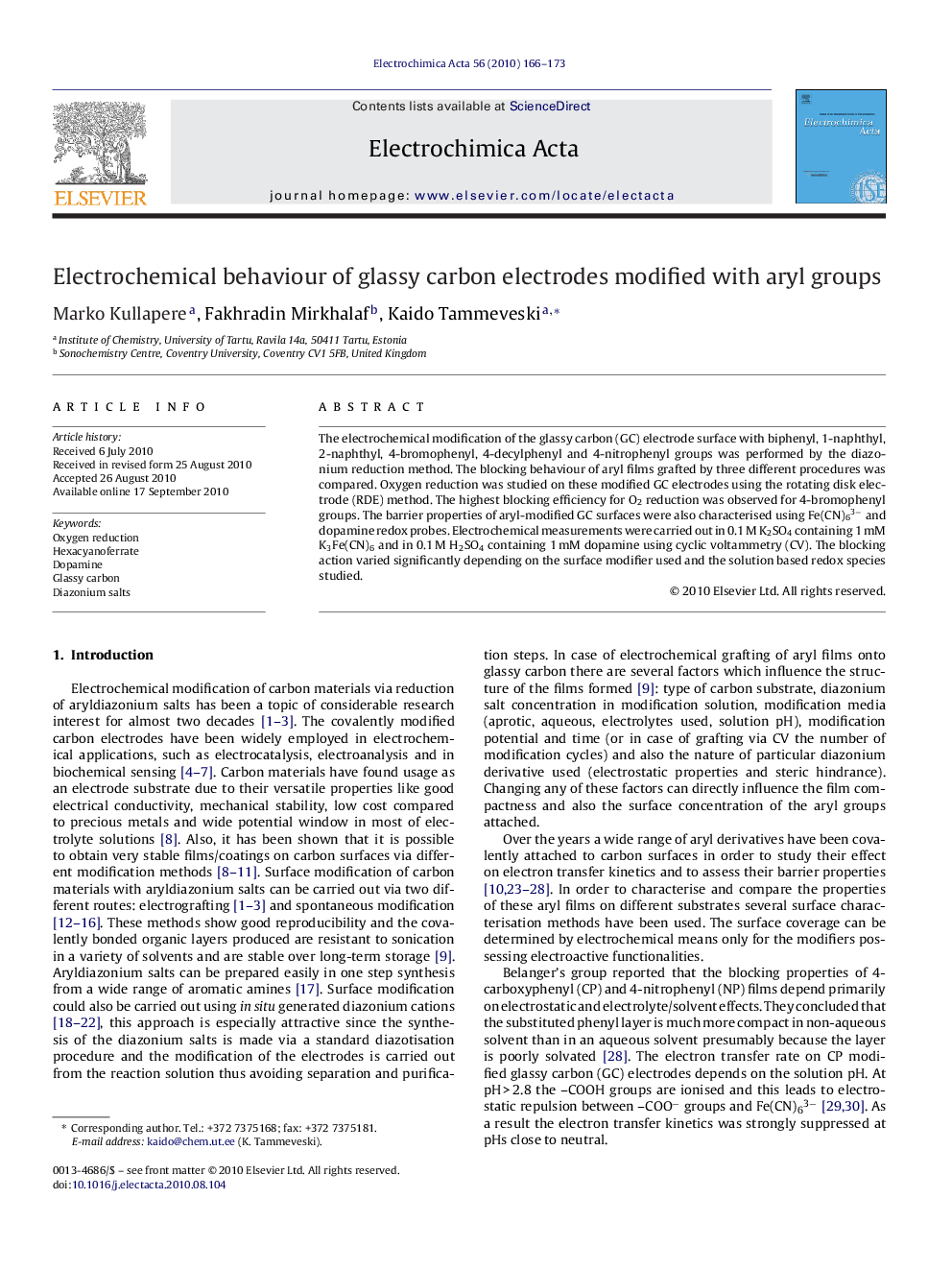| Article ID | Journal | Published Year | Pages | File Type |
|---|---|---|---|---|
| 190486 | Electrochimica Acta | 2010 | 8 Pages |
The electrochemical modification of the glassy carbon (GC) electrode surface with biphenyl, 1-naphthyl, 2-naphthyl, 4-bromophenyl, 4-decylphenyl and 4-nitrophenyl groups was performed by the diazonium reduction method. The blocking behaviour of aryl films grafted by three different procedures was compared. Oxygen reduction was studied on these modified GC electrodes using the rotating disk electrode (RDE) method. The highest blocking efficiency for O2 reduction was observed for 4-bromophenyl groups. The barrier properties of aryl-modified GC surfaces were also characterised using Fe(CN)63− and dopamine redox probes. Electrochemical measurements were carried out in 0.1 M K2SO4 containing 1 mM K3Fe(CN)6 and in 0.1 M H2SO4 containing 1 mM dopamine using cyclic voltammetry (CV). The blocking action varied significantly depending on the surface modifier used and the solution based redox species studied.
